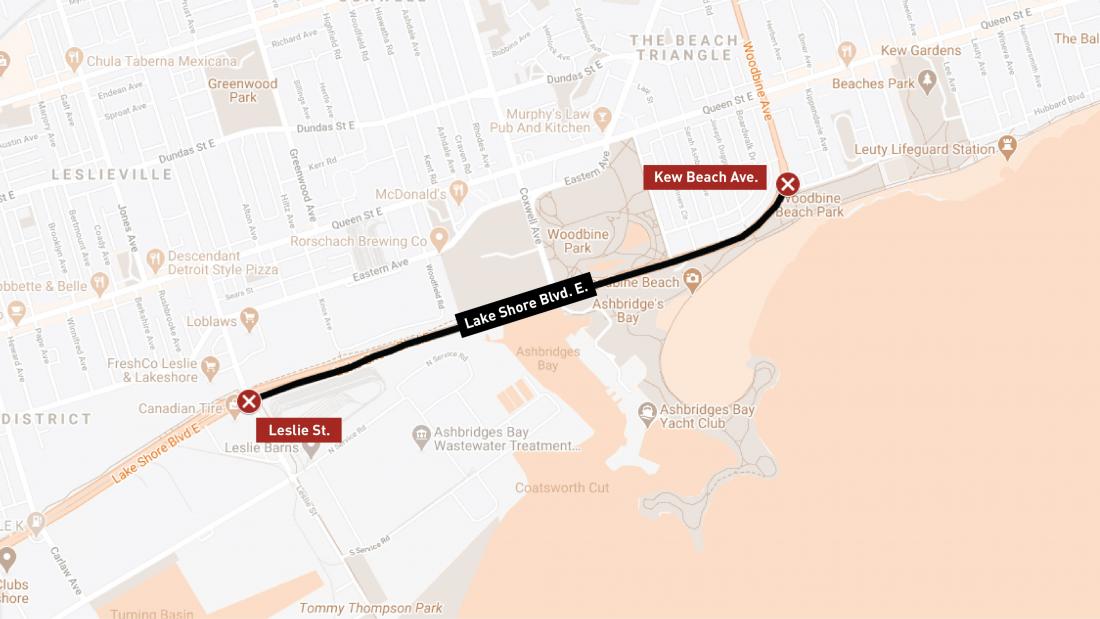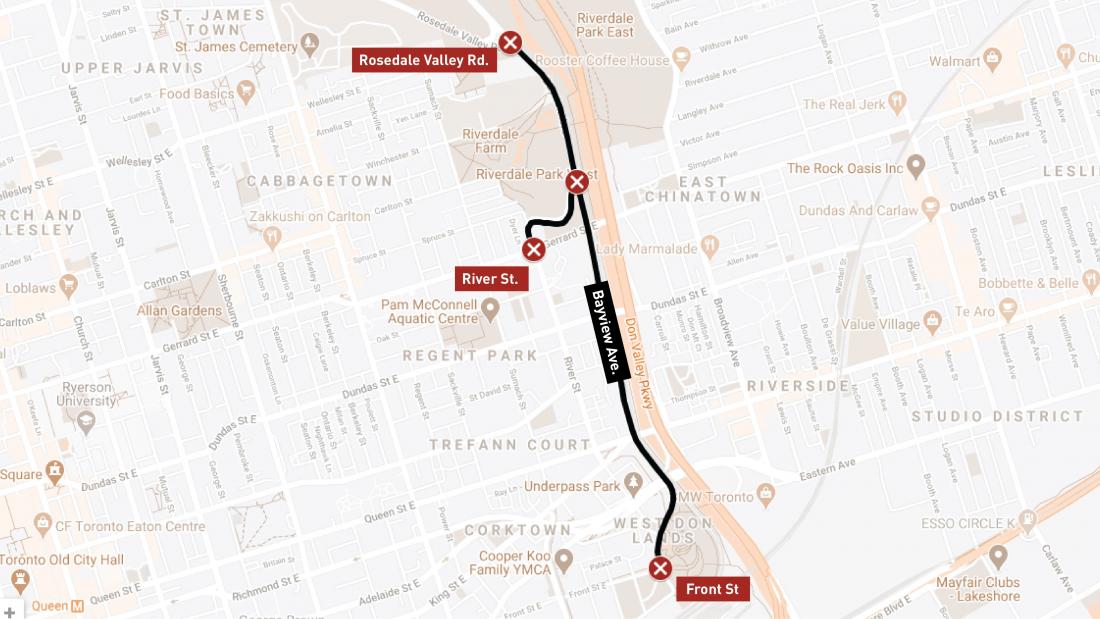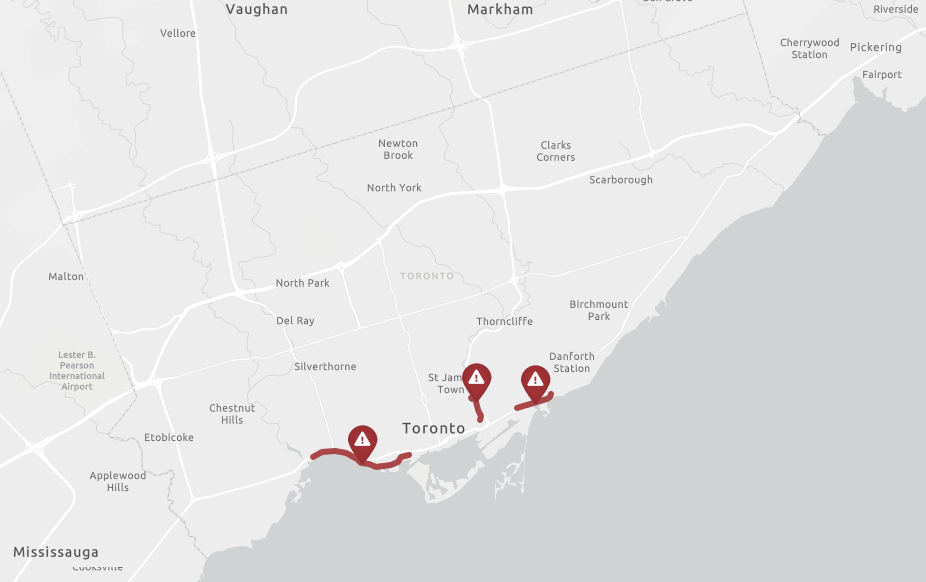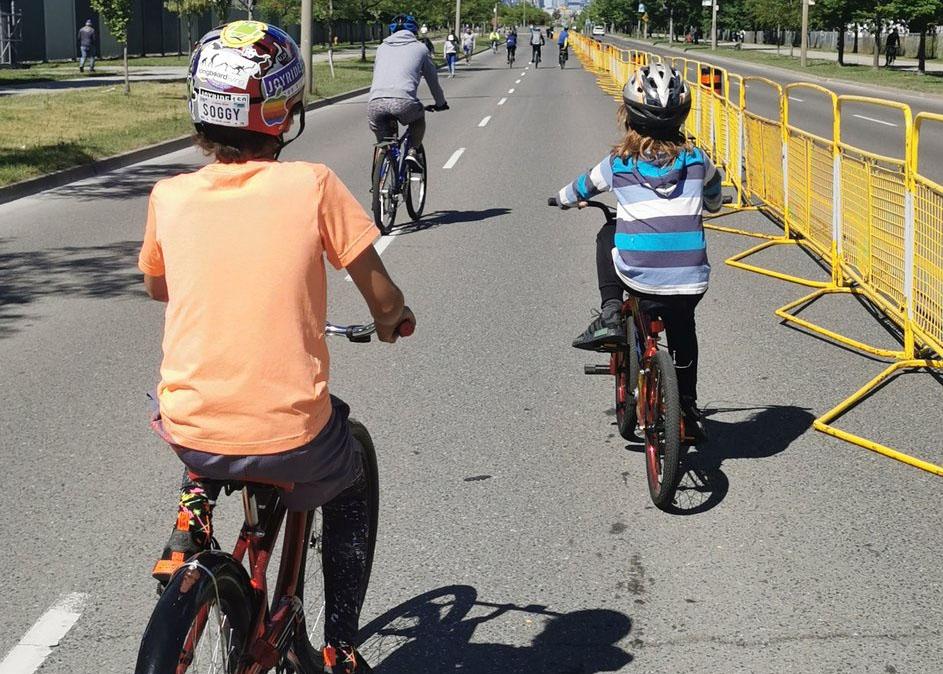
What's next for ActiveTO Major Road Closures?
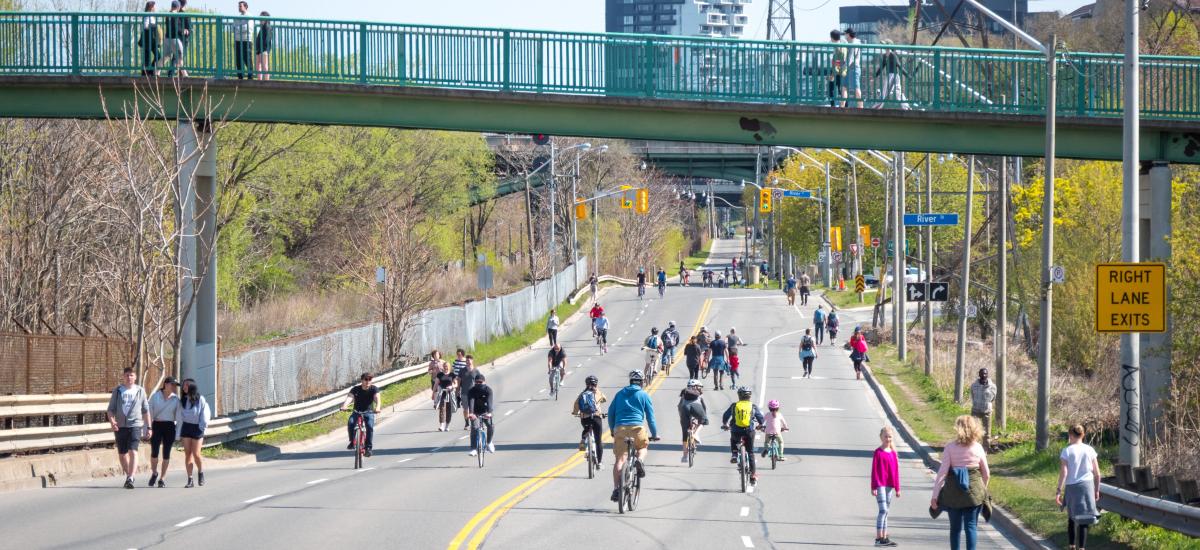
People walk and cycle on Bayview Ave during a weekend road closure. Photo by Robin Pueyo.
Keep in touch! Sign up for email updates to stay in the loop.
Subscribe to our monthly newsletter: The Ring & Post
What's next for ActiveTO Major Road Closures?
In this post, we walk through several topics:
- Review the success of ActiveTO Major Road Closures and its success by the numbers
- Begin a conversation about where else in the City ActiveTO Major Road Closures could benefit local residents
- Reflect on the limitations of ActiveTO Major Road Closures and the many interrelated issues that must be addressed concurrently
A Recap of ActiveTO Major Road Closures
The Major Road Closures have been a massive success. We want to see them extended and expanded to other locations across the city.
It has been over a month since Toronto City Council voted to accelerate building 40 km of new bike lanes across as part of ActiveTO. Since then we’ve seen new bike lanes on Dundas St. E, University Ave., and Bloor St. E., with future projects still to come this summer including Brimley Ave. in Scarborough and a complete streets implementation incorporating patio space on Danforth Ave. These bike lanes are a historic first step to creating a more equitable cycling network across the city, and Cycle Toronto is continuing to build support for expansion of these projects as part of the city’s pandemic response.
ActiveTO is more than new bike lanes. As we discussed on CBC Spark, part of the strength of the city’s framework is that it's encouraging both cycling as transportation and recreation. While we continue to await for more enhancements to the city’s Quiet Streets program by the announced partnership with 8-80 Cities, the weekend Major Road Closures appear to be a massive success.
These streets are happy, euphoric, ecstatic. Families are able to ride side by side. Kids can rush ahead without parents and guardians fearing traffic. These road closures are transformative,. open, expansive, and free. On the first weekend Mayor John Tory was excited by seeing many happy people while checking it out in person,
“There were lots of people out, families, and they were having a really great time… it was just a good time to be a politician because people were actually happy after all these weeks of receiving bad news and being cooped up.”
- Mayor John Tory
Each ActiveTO Major Road Closure site has its own charm and personality, and each is worth exploring this summer.
Photo by Amber Mac
Where are the ActiveTO Major Road Closures?
ActiveTO Major Road Closures currently include 3 locations near some Toronto’s busiest trails to prevent crowding and provide space for physical distancing. They comprise about 10 km of road space closed to vehicular traffic, and rebalanced for people to encourage physical activity of all ages and abilities.
Lake Shore Blvd. W. (Windermere to Stadium): ~ 5.5 km
Lake Shore Blvd. E. (originally Coxwell to Woodbine, now Leslie to Woodbine): ~ 2.1 km
Bayview Ave (Front to Rosedale Valley) ~ 2.2 km:
Major Road Closures - Success in Numbers
The City released its initial data from the May 23 weekend, and the numbers are staggering. It counts over an 8 hour period between 11am and 7pm on the Saturday:
People cycling |
People walking and rolling |
Location |
|
21,000 |
4,400 |
Lake Shore W at Ontario Drive |
|
5,000 |
5,400 |
Lake Shore E, east of Coxwell Avenue |
|
4,700 |
1,000 |
Bayview, north of River Street |
|
3,400 |
750 |
Adjacent Don Valley Trail |
That’s over 30,000 people on bikes. As Matt Elliott notes, that’s more than the population of a small town. These Major Road Closures are happening on a weekend during a pandemic.Compare that to the City’s open data on car traffic which shows Lake Shore W. at Ontario Dr. on Wednesday, January 24, 2018 saw 24,528 cars in both directions over the busiest 8 hours between 7:30am and 6:00pm during ‘business as usual’.
Lake Shore West |
Major Road Closure
|
Normal Operation
|
|
Users |
25,500 (people) |
24,528 (cars) |
|
Lanes |
4 (including MGT) |
6 |
Where next?
All current Major Road Closures are concentrated near the core and the lake. While these are good locations, more can be done to encourage recreation and active transportation across Toronto.
Where could the city do more? We want to know where you think ActiveTO Major Road closures would help your neighbourhood. If you represent a community organization outside of the core of the city, please get in touch. We’d love to hear where you would like to see a major road closure.
Get in touch
Primary criteria for initial consideration include:
- Expanding outside of the core such as in Etobicoke, North York, and Scarborough
- Ensuring minimal intersections to limit traffic impact to cars and people
- Providing alternatives to busy parks and trails so people can spread out
- Accessible for local residents, preferably by biking, walking, or rolling so as to reduce the need to drive, park, and then explore
- A sought after destination that will encourage usage
Toronto has about 5,500 km of streets. Surely we find more space to encourage people walking, rolling, and riding safely outside this summer beyond just downtown.
Get in touch
Strong community consultation is essential, and not just drawing lines on maps. We’ll be continuing these conversations and look forward to collaborating and working with the City and community organizations.
Safe streets beyond major road closures
There is still a lot of work that needs to be done to ensure residents across the city have safe spaces to walk, cycle, and roll. The pandemic has laid bare the deep inequities in our city. Major Road Closures as part of ActiveTO have been one way to help address issues related to mobility and encouraging physical distancing. More work will need to be done including:
- Identifying and addressing the complex and inter-related issues that make streets unsafe for residents beyond traffic violence, such as issues of racism, equity, and poverty-related discrimination.
- Recommitting to the goals of Vision Zero and ending traffic violence.
- Eliminating barriers that prevent low-income and racialized residents from being able to ride a bike, such as cost and access to bicycles.
- Implementing policies in the TransformTO climate plan to build a resilient city
- Improving access to reliable and rapid transit, such as by advocating for dedicated permanent and emergency transit funding.
We need to keep the momentum going. Join the movement for safe streets. Your support helps us advocate to expand ActiveTO to accelerate building more bike lanes across the city. Even $5 a month helps us work through the pandemic toward a safer, healthier and more vibrant cycling city for all.


